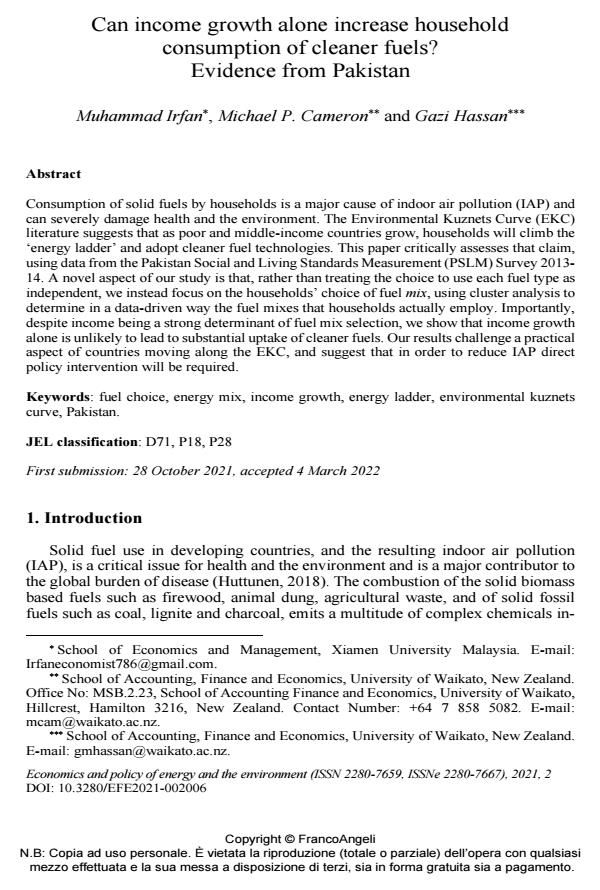Can income growth alone increase household consumption of cleaner fuels? Evidence from Pakistan
Journal title ECONOMICS AND POLICY OF ENERGY AND THE ENVIRONMENT
Author/s Muhammad Irfan, Michael P. Cameron, Gazi Hassan
Publishing Year 2022 Issue 2021/2
Language English Pages 26 P. 121-146 File size 276 KB
DOI 10.3280/EFE2021-002006
DOI is like a bar code for intellectual property: to have more infomation
click here
Below, you can see the article first page
If you want to buy this article in PDF format, you can do it, following the instructions to buy download credits

FrancoAngeli is member of Publishers International Linking Association, Inc (PILA), a not-for-profit association which run the CrossRef service enabling links to and from online scholarly content.
Consumption of solid fuels by households is a major cause of indoor air pollution (IAP) and can severely damage health and the environment. The Environmental Kuznets Curve (EKC) literature suggests that as poor and middle-income countries grow, households will climb the ‘energy ladder’ and adopt cleaner fuel technologies. This paper critically assesses that claim, using data from the Pakistan Social and Living Standards Measurement (PSLM) Survey 2013- 14. A novel aspect of our study is that, rather than treating the choice to use each fuel type as independent, we instead focus on the households’ choice of fuel mix, using cluster analysis to determine in a data-driven way the fuel mixes that households actually employ. Importantly, despite income being a strong determinant of fuel mix selection, we show that income growth alone is unlikely to lead to substantial uptake of cleaner fuels. Our results challenge a practical aspect of countries moving along the EKC, and suggest that in order to reduce IAP direct policy intervention will be required.
Keywords: fuel choice, energy mix, income growth, energy ladder, environmental kuznets curve, Pakistan.
Jel codes: D71, P18, P28
Muhammad Irfan, Michael P. Cameron, Gazi Hassan, Can income growth alone increase household consumption of cleaner fuels? Evidence from Pakistan in "ECONOMICS AND POLICY OF ENERGY AND THE ENVIRONMENT" 2/2021, pp 121-146, DOI: 10.3280/EFE2021-002006